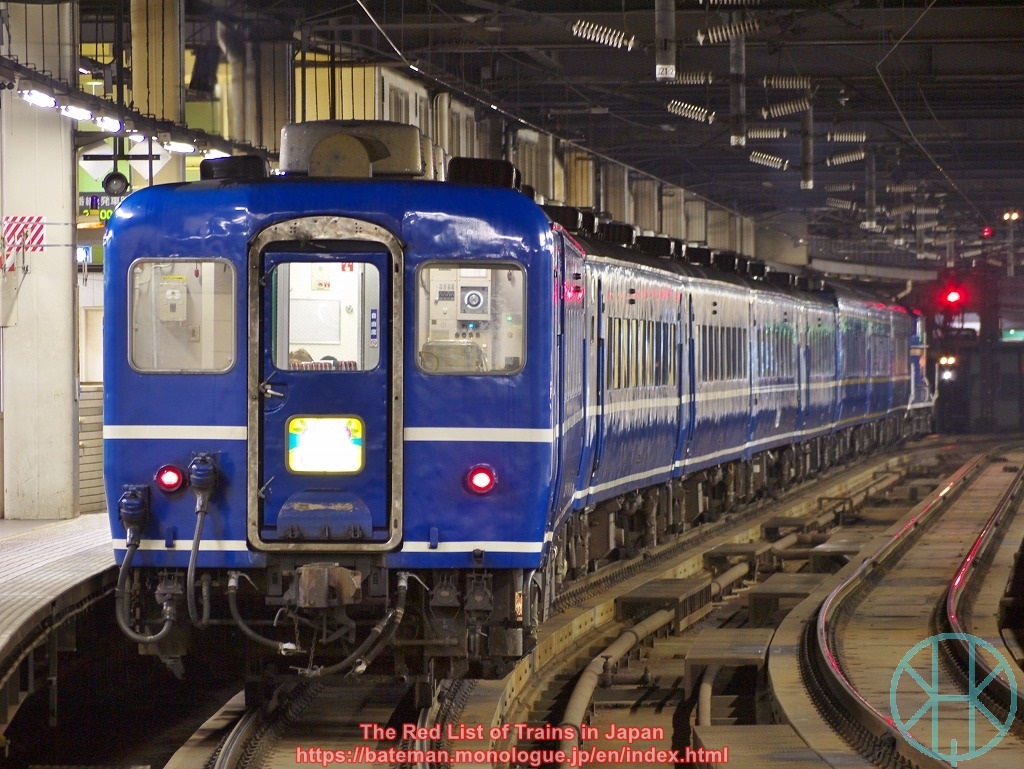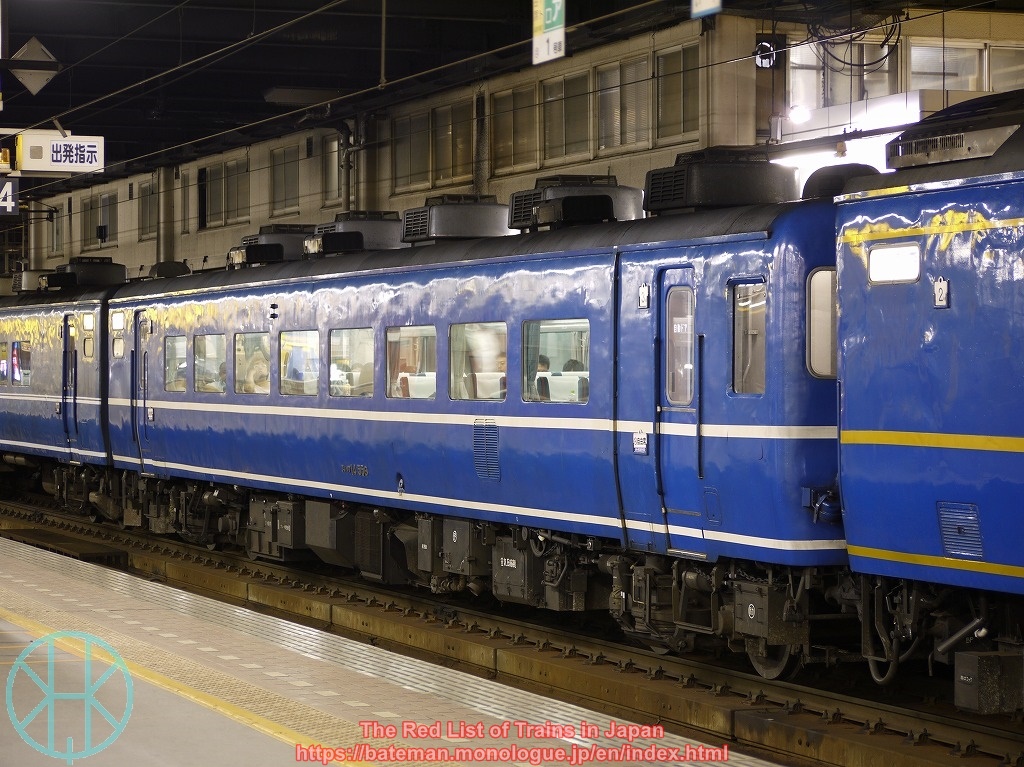JNR 14 series

Data (as of 29 Nov 2025)
| Status: | Critically Endangered |
| (JR Hokkaido) | |
| Extinct | |
| (Other JRs & Tarumi) | |
| and Tarumi) | |
| Least Concern | |
| (Tobu) | |
| Data Deficient | |
| (Oigawa) | |
| Number built: | 325 (seated) |
| 251 (sleeper) | |
| Registered: | 10 (seated) |
| 0 (sleeper) |
History
The 14 series is a type of limited express coaching stock developed by Japanese National Railways. There are two groups: sleeper coaches and seated coaches. Both are based on 12 series coaches, but the 14 series was designed for limited express trains.
Seated coaches of the 14 series were initially introduced to seasonal trains, which means that JNR did not intend to use them on regular service. Thus, only standard class coaches were constructed, and there was no Green Car (first class) and dining car. Their first regular service commenced in 1975 on night express trains between Osaka and Kyushu. Since 1980, they had been used for various regular services such as Express Niseko (Hakodate - Sapporo via Kutchan and Otaru). Many coaches were converted to Joyful Trains as well, but they sharply declined after the mid-1990s. A few coaches were resold to Tarumi Railway, but scrapped by 2006. The last regular service was Express Hamanasu (Aomori - Sapporo), which was discontinued in 2016.
Sleeper coaches of the 14 series were introduced to sleeper trains including Limited Express Sakura (Tokyo - Nagasaki and Sasebo), Inaba + Kii (Tokyo - Yonago and Tokyo - Kii-Katsuura, respectively). Not only standard class but also first class and dining cars were introduced. Unlike other sleeper coaches, a train formed of 14 series coaches could be divided to two trains and vice versa, allowing more flexible operation. In Hokkaido, several coaches were converted to be compatible with diesel multiple units, as JR Hokkaido inserted them to KiHa 183 series for night trains. A few were also converted to Joyful Trains.
Following the privatisation of JNR, JR Hokkaido, JR East, JR Central, JR West and JR Kyushu. JR Shikoku later purchased redundant coaches from JR Central. However, as night trains declined, all coaches were scrapped by 2017.
Considerable number of coaches were produced based on the 14 series, which were exported to Mexico and later Cuba. Some secondhanded coaches were exported from Japan to Thailand.
Current Operations & Future Prospects
Today, JR Hokkaido, Oiwaga Railway and Tobu have several seated coaches. JR Hokkaido uses four coaches for steam trains in Kushiro area.
Oigawa Railway has four coaches for steam trains, but they have been stored at a depot for years. It is not certain when or even if they can enter into service.
Tobu has five coaches for steam train SL Taiju in Tochigi Prefecture. The company has been painting some of them brown, and they are likely to be operational for at least a few more years.
Photo

Seated coach of the 14 series looks like other limited express trains such as 485 series.
(Updated: 29 Nov 2025)
